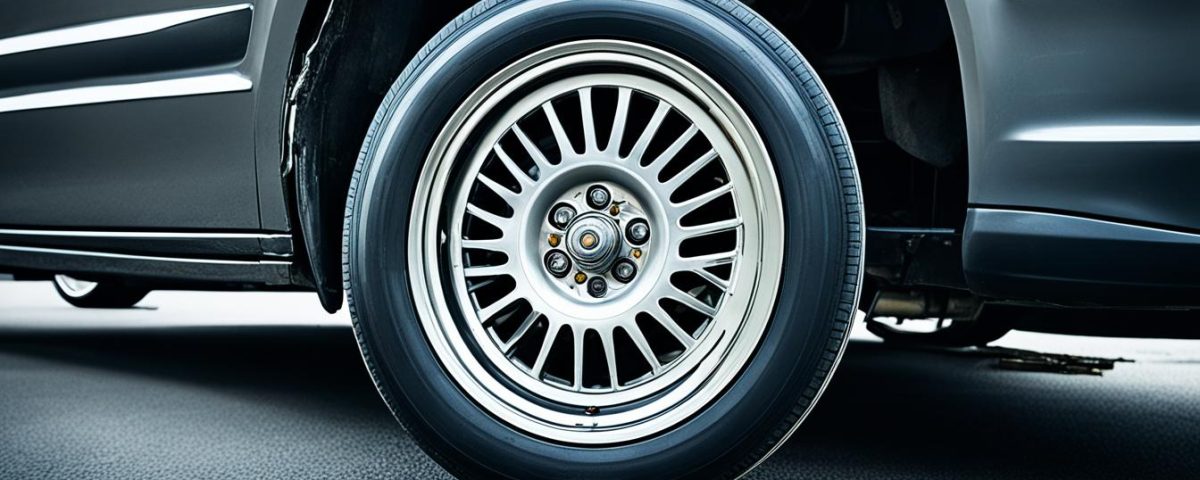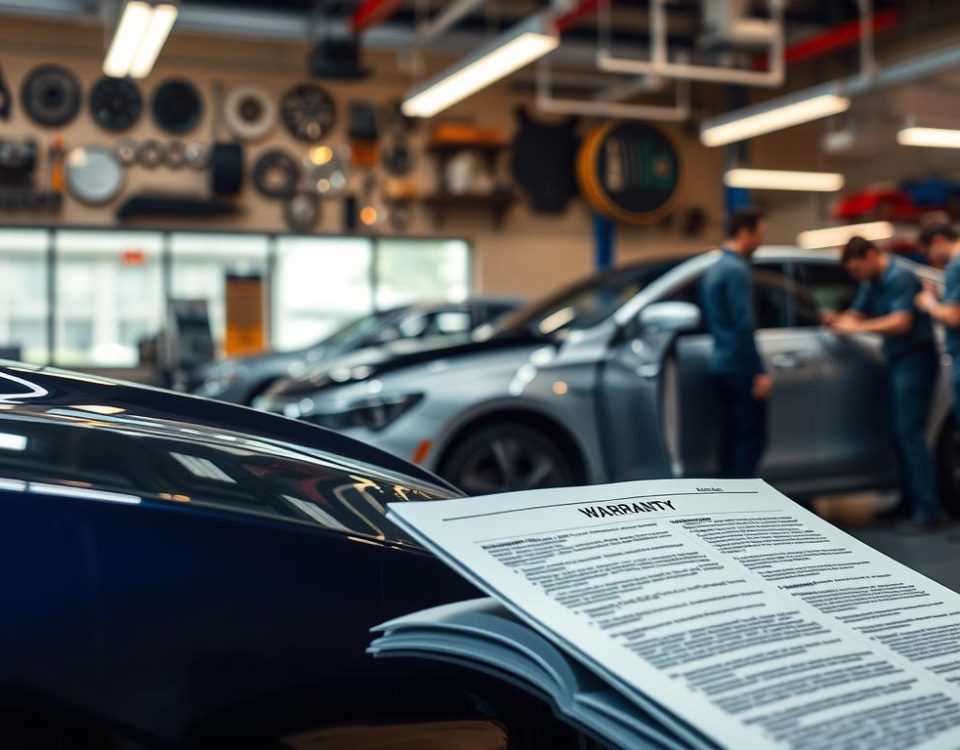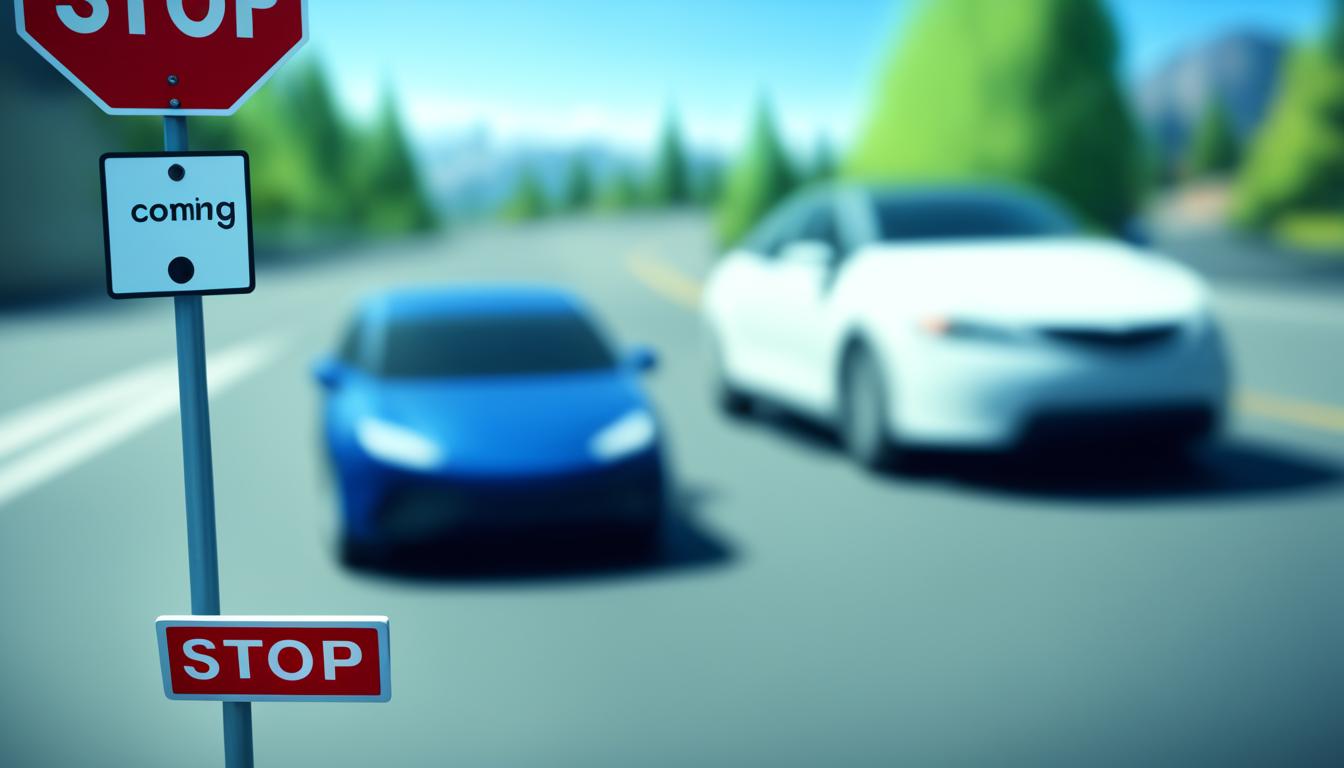
Top Safety Tips to Avoid Car Collisions
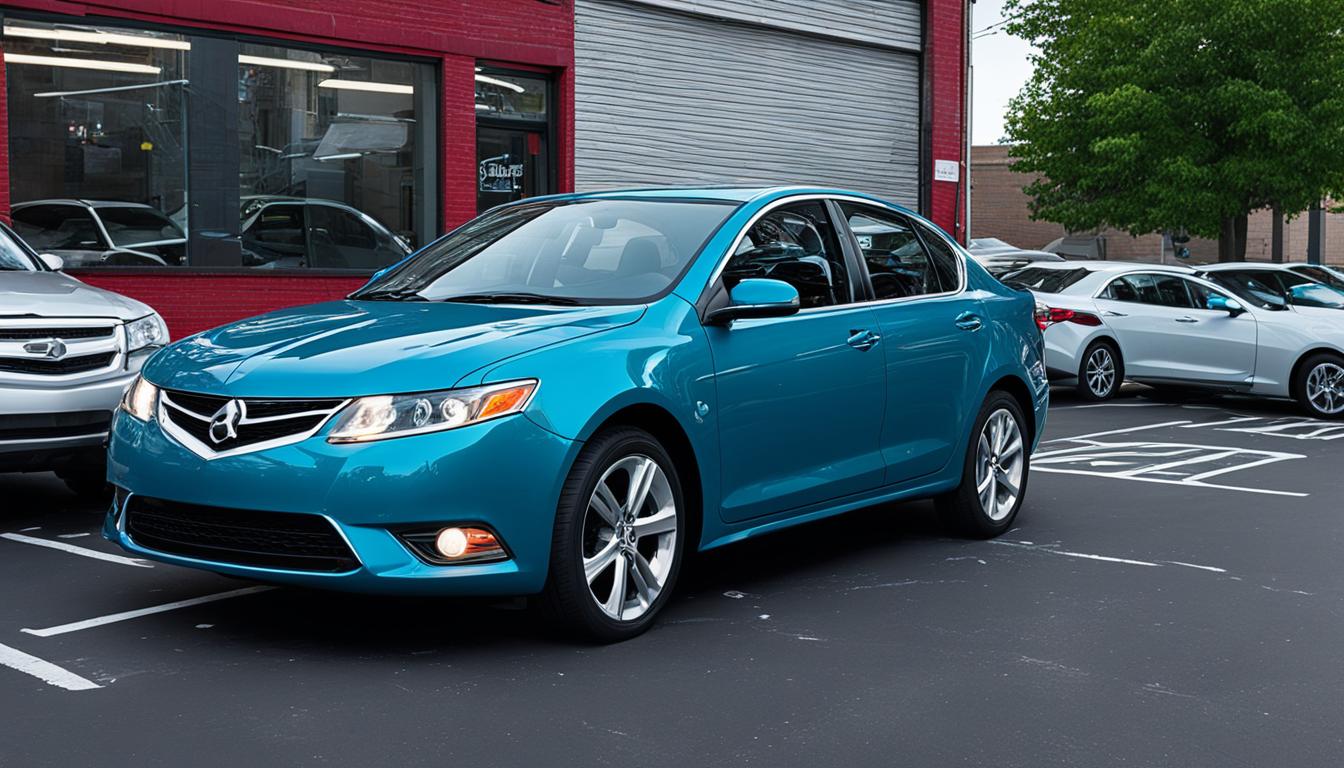
Why Timely Collision Repair Saves You Money in the Long Run
Suspension damage doesn’t just hurt how your vehicle runs, it affects the ride and how safe it is. It’s a big concern if your car has been in a crash. After an accident, most people quickly fix the outer body. But, checking the suspension is as important.
The suspension system is key for a smooth drive and control. It’s made up of parts like the frame, springs, shocks, and struts. These help bear the car’s weight and soften blows from the road.
After a crash, you might notice signs like the car drifting, more bumps, hard steering, or one side lower than the other. Experts in fixing crash damage know how to spot and mend suspension troubles. They do tests and look closely to see what parts need fixing or replacing.
Key Takeaways:
- Suspension damage affects how well your vehicle runs, the ride, and safety.
- Front or rear-end crashes can mess up the suspension.
- Watch for signs such as it pulling, more bouncing, steering troubles, or uneven height.
- Experts can find and fix suspension issues after a crash.
- Fixing suspension issues quickly is key for safety and how the car runs.
Basics of the Suspension System
The suspension system is key for how well your car drives on the road. It helps you control the car and keeps the tires firmly on the ground. This means your car performs better and is easier to handle.
This system is made up of many parts like the chassis, springs, shocks, and struts. They team up to carry the car’s weight and soak up shock from bumps. They make steering better and the ride smoother.
If your car is front or rear-wheel drive, the system works in different ways. The front system helps you steer and keeps the front stable. The rear system helps the back tires grip the road well.
In both front and rear suspensions, you’ll find parts like axles, shock absorbers, and control arms. They all have jobs that keep your car running smoothly.
To see the suspension system in action, check out the image below:
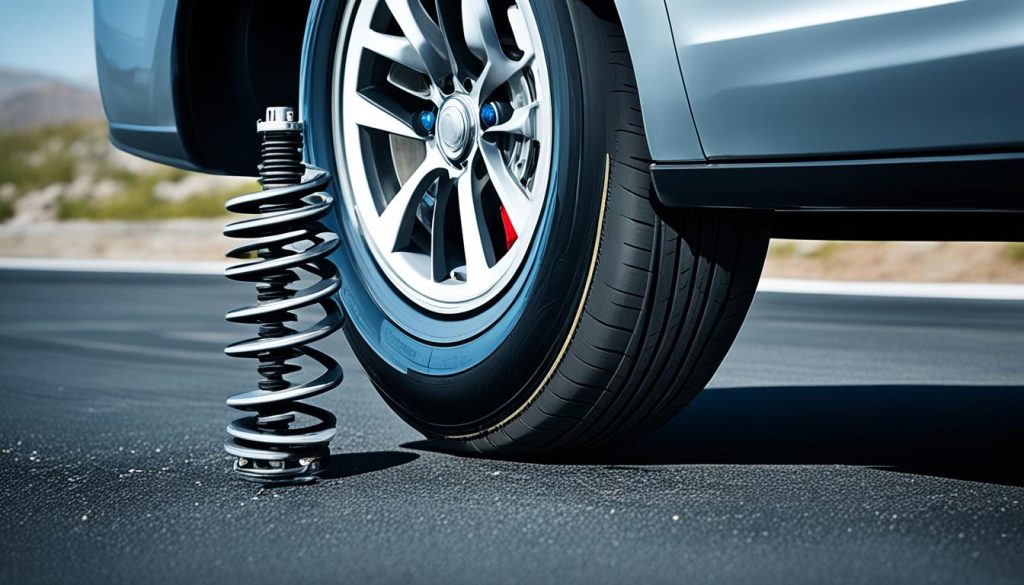
That image shows how the suspension system looks, with all its parts working together. It’s clear how each piece is important for keeping the car in shape and the tires on the road.
It’s really important to know how the suspension system works. This helps keep your car driving well and you safe. By making sure all parts are in good shape, you’ll have a great time driving.
Causes and Signs of Suspension Damage
Suspension damage can happen in many ways. It might come from a direct hit to a front wheel or by going off-road or in a bad collision. Damage can also show up in parts like the unibody, front rail, or cowl. When a vehicle’s front gets hit, the front wheels can get damaged. Also, rough off-road driving can hurt many parts of the suspension.
It’s key to spot suspension damage early. Look out for:
- The car pulling to one side while driving, indicating an imbalance in the suspension
- Increased bouncing or bumps on the road, suggesting compromised shock absorbers
- Difficulty steering, which could imply damage to steering components or misalignment
- The vehicle sitting lower on one side, indicating issues with the suspension system
- Overly greasy or oily shock absorbers, a potential sign of leakage or damage
- Nose diving forward when braking, indicating problems with the suspension’s ability to manage weight transfer
Spotting these signs means it’s time for a check-up. Getting your suspension looked at by a professional is critical. Not fixing suspension issues can make things worse and put you at risk when driving.
A skilled technician will visually check your suspension and then take your car for a test drive. By doing this, they can figure out what’s wrong and what needs fixing. Letting an expert tackle your suspension issues can keep your vehicle running smoothly and safely.
Diagnosing and Repairing Suspension Damage
Fixing suspension damage needs skilled people. Collision technicians are experts who can spot issues. They know how to check your suspension system well.
They start by inspecting your vehicle. They look at the tire alignment and if the car looks even. They check for any visible damaged parts, like bent pieces.
Next, they take the car for a spin. While driving, they notice if it pulls to the side. They also check if the steering wheel is straight, and listen for strange noises.
If there is damage, they use special equipment to lift the car. This lets them closely examine damaged parts. This step helps them understand how bad the damage is.
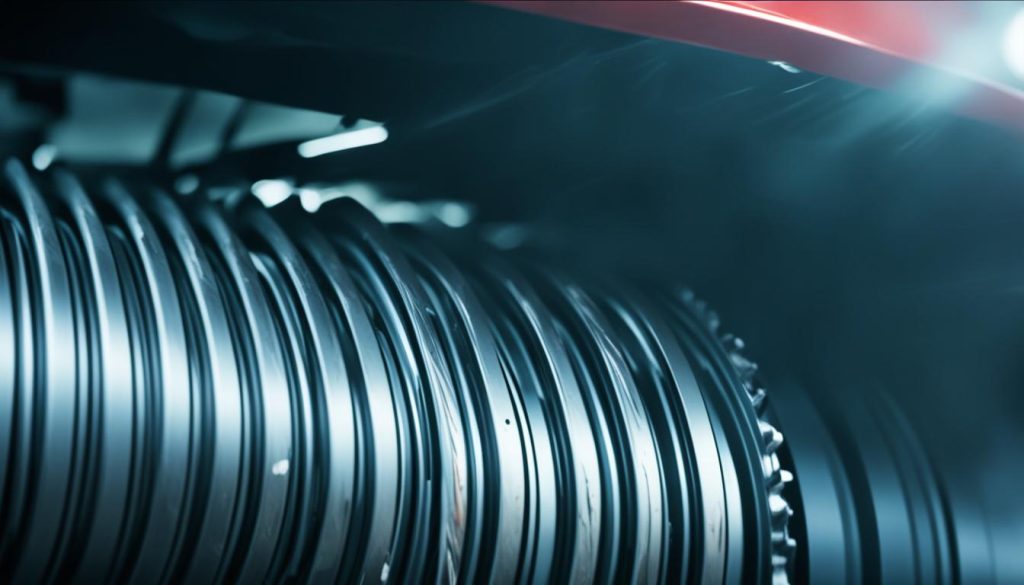
Sometimes, they need to use alignment tools. This shows exactly where the suspension is damaged. The tools guarantee precise fixes for your suspension.
When they repair, they swap out the bad parts for new ones. This could mean changing shocks, struts, and more. They know how to make your suspension work like new.
Letting a skilled technician handle your car’s suspension damage is smart. They have the experience and tools for the job. So, you can trust they’ll fix your car right.
Conclusion
Heading up, never forget about your suspension system’s safety. It affects how well your vehicle works, how comfy the ride is, and, most of all, keeps you safe. Getting it fixed fast is key if it’s damaged. Look out for signs like the car pulling one way, lots of bouncing, or hard steering. If you spot these, get a pro to check and fix it. This will prevent more trouble and keep your car running well.
Having a pro look at and fix your suspension can make your car drive better and be safer. Quick fixes stop more problems and keep your car performing. A pro will do whatever it takes, like looking closely, driving the car, or changing parts, to fix it right.
Don’t take chances with your safety or your passengers’. If you think something’s wrong, get help from a pro. Our team knows how to deal with suspension problems. We’ll make sure your suspension is safe by checking it fast and fixing it right.


